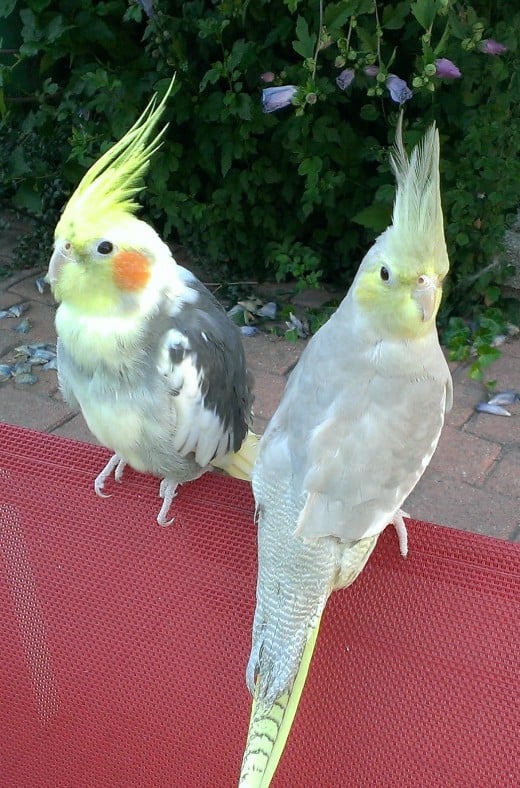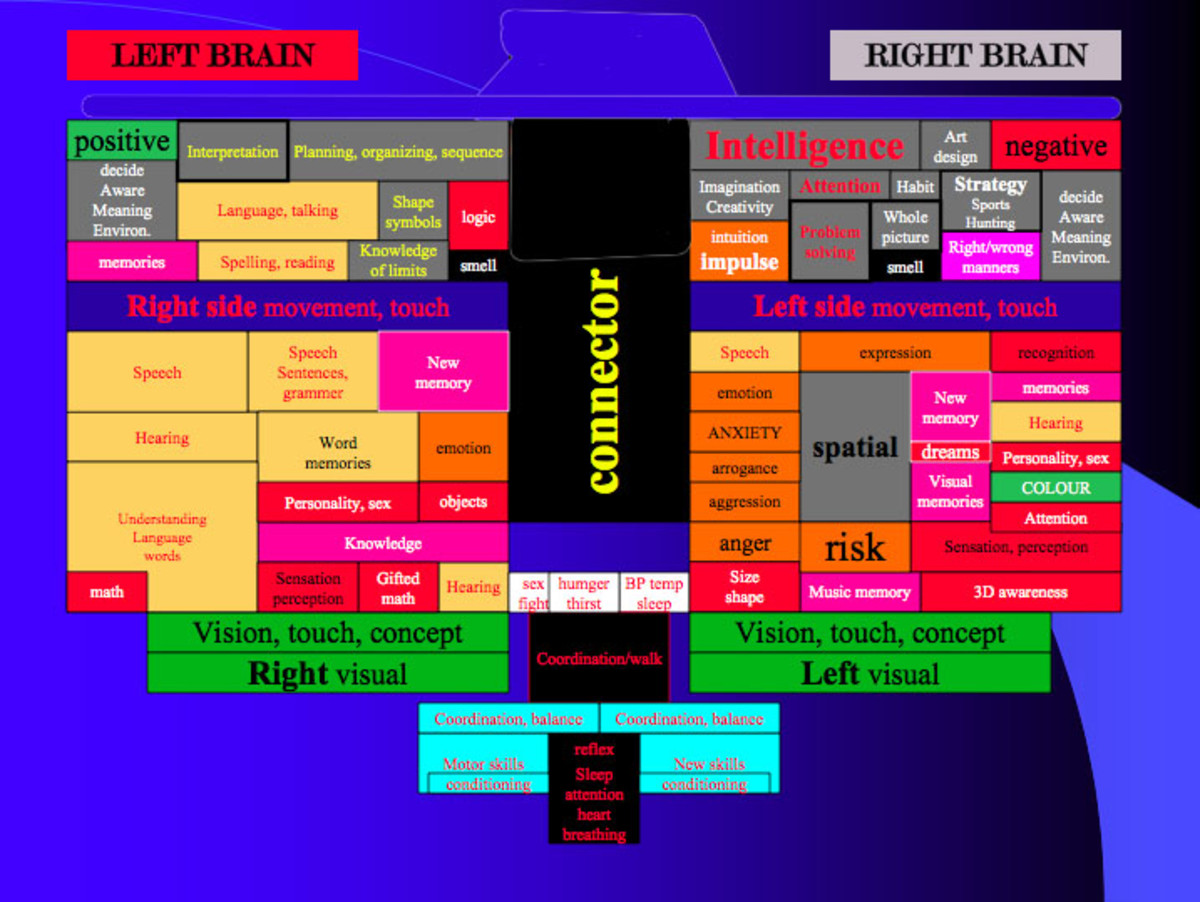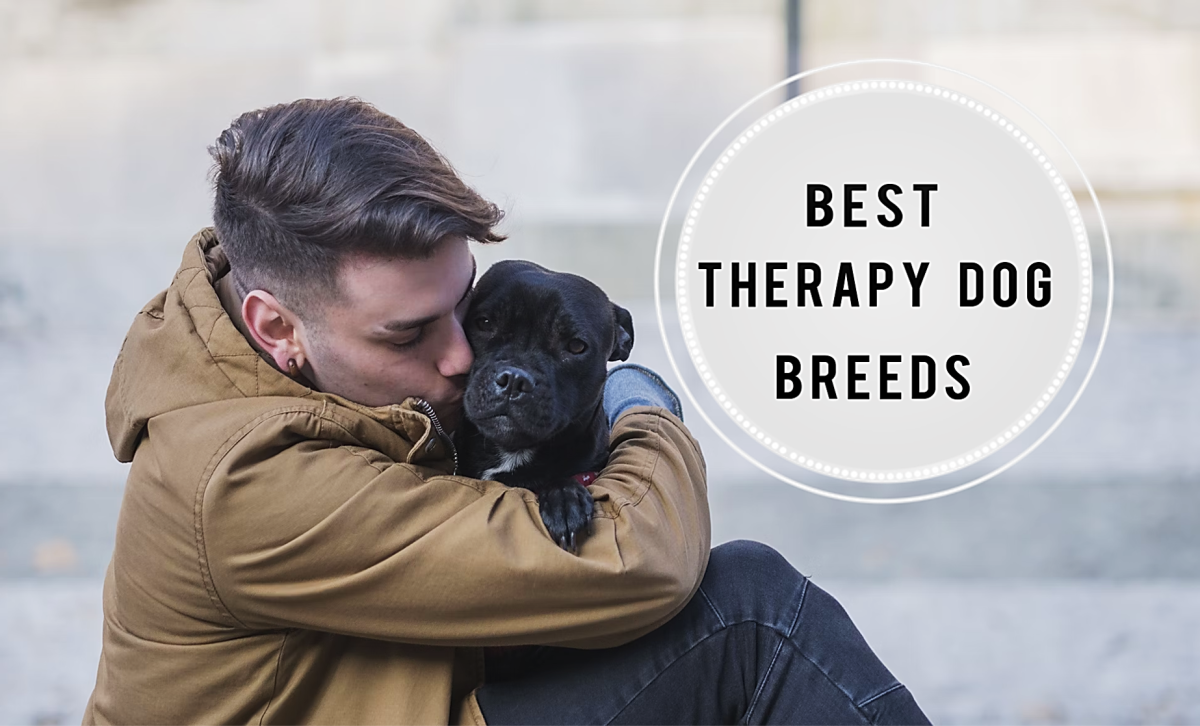Some of the Best Therapists Have Four Legs
My Therapist is a Beast!
Animal therapy has been used since the early 1900's in America. The earliest documented cases of animals used with mental patients was in 1790, where farm animals in institutions showed a decrease of the need for medications and restraints (Justine Jackson 2012). In the early 1900's dogs and other species of animals were introduced to hospitals and mental institutions. This provided an atmosphere that was less medical and improved both physical and mental therapies of the patients. Children that were exposed to dogs as "co-therapists" were more willing to discuss their feelings and work on improving their lives than those children that weren't exposed to dogs (Levinson, 1969).
Today, more and more doctors, therapists and public institutions are finding that the use of animals in therapy promote faster healing, a sense of responsibility and a feeling of empowerment.
Animal-Assisted Therapy benefits
With a Woof and a Meow
The use of animals in therapy have shown to help people suffering from depression, anxiety, suicidal tendencies and bi-polar disease.
People with handicaps or disabilities like autism, down-syndrome, mental impairments and emotional disorders respond to pet therapy well.
Therapists often find that an animal can assist children and adults, in adapting their tone of voice, body language and comfort level. Before pet therapy can be useful, the patient and the animal need to have time to form a relationship with each other. Animals, like people; crave physical attention and research shows that it doesn't take more than a session or two for the animal to physically attach itself to the patient. Typically, the patient accepts the animal's affection quickly and reciprocates with touch and verbal responses.
Using pet therapy with victims of sexual assault can also reduce depression, anxiety, and other symptoms of post-traumatic stress disorder. Pet therapy promotes social interaction. Victims of sexual assault are less likely to be anxious and are comforted by the presence of an animal. Having a pet present, helps victims of sexual assault feel more comfortable in a therapy setting. “Petting and talking to a cat or a dog can help promote relaxation, which can also decrease blood pressure, release stress, increase morale, increase calmness, decrease anxiety, improve patient outlook, reduce the need for medication, reduce fear and anxiety in patients with a pre-existing condition (Velde, Cipriani & Fisher 2005).

Qualities of a Therapy Animal
Animals of any breed, size or age may be eligible to become therapy pets. However, not all animals are cut out for the job. Animals for one, must fit the surroundings. It isn't logical to bring a chicken into a hospital due to the fact that chickens poop constantly and bring in unwanted germs! Allergies also play a huge part in which animal can be picked for therapy. If the patient has an allergy to cats, then choosing a kitten, no matter how loving or cute, wouldn't be appropriate in this case.
The most popular therapy animal is the dog. While many animals are used for therapy, I will describe the traits of a therapy dog. All other animals would fit similar requirements.
Therapy dog candidates must possess certain traits in order to qualify. Temperament is the most important factor when choosing an therapy dog. Before even entering a training program, the therapy dog candidate must be friendly and non-aggressive. For this reason, young puppies usually are not used. It is difficult to assess the personality of a young puppy before it has had the opportunity for socialization, exposure to loud noises and sudden movement.
The dog must get along remarkably well with children, men, women and other animals. The dog should also be confident, patient, calm, gentle and receptive to training.
Petpartners.org is one organization that trains and places animals used for therapy. In order to even be considered for their program, the pet owner/pet must meet the following guidelines:
- Dogs and cats must have lived with their owner six months before they can be evaluated.
- Dogs must be at least 1 year old before they are eligible to be registered by Pet Partners and begin volunteering.
- Important characteristics of a therapy animal are that they are reliable, predictable, and controllable.
- A therapy animal should be very social and enjoy interactions with people.
- A therapy animal should show no aggression towards people or other companion animals (no growling, hissing, swatting, barking, lunging, attempting to bite, or bite history).
- A dog should have basic obedience and be able to sit, down, stay, heel, leave it and come when called before taking the Pet Partners evaluation.
- Animals that are fed a raw protein diet are not able to participate in the Pet Partner program. For more information, please visit the Pet Partners website: www.petpartners.org
Once an animal is accepted into the program, the animal undergoes an evaluation and is expected to respond to not only the owner but strangers working with the pet.
Many of the placed animals become visitors of schools, nursing homes, hospitals, Veteran Hospitals/homes, doctor offices and other public institutions.


Preparing A Pet to Be a Therapy Pet
If you are a pet owner, you already know the love you receive from your pet. No matter what kind of day you may have had, you know that when you get home, you will be welcomed by your pet and made to feel as if you are the most important person in the world! Magnify this feeling by three and imagine how beneficial that unselfish love is to a person that suffers emotionally. When pets are being trained to become therapy pets, it is important that as young pups or kittens, they are exposed to a variety of conditions to see if they can indeed become therapy pets.
1. Exposure to loud noises and the ability to sit calmly through them.
2. The ability to learn basic control of its own body. The animal needs to exhibit comfort in being held, hugged, kissed, squeezed, touched and stroked.
3. The animal needs to be able to feel comfort with every person it meets. This doesn't mean that the animal loses any devotion to its owner; rather, the animal enjoys receiving affection from people other than its owner.
4. The pet needs to be comfortable on a lead, riding in the car and going in and out of buildings. It also needs to be able to remain calm in large crowds of people and environments that present different levels of noise.
Getting a pet to this point of acceptance takes a lot of training, patience and repetition. One cannot expect an animal to simply walk into a crowded building and perform as expected.
For this reason, many therapy dogs are often beyond the puppy stage because they are calmer and don't react with the enthusiasm a puppy would; however, some puppies do very well if their personality is one that trains and learns easily.
I owned a long coated German Shepherd at one time. I took her to walk 5k's with me from the time she was four months old. She was used to people coming up to her and petting her. She was very loyal to me and would never leave my side; however, she responded very appropriately to everyone that came up to her. I decided to take her to the nursing home that my grandmother lived in. At first, we went to my grandmother's room and she learned to sit by Grandma's feet while she watched movies and then she learned to lay by Grandma's bed while she napped. After a few weeks, we began to sit in the day room and when some of the residents motioned for her to come visit them, I allowed her to drag her lead across the floor to them. She would sit and allow them to pet her, give them a kiss and a wag of her tail and then come back to me afterward. By the time she was 1 year old, she could walk into the home without a lead, approach the sitting residents calmly and wait for each person to give her a physical prompt, showing her who wanted to pet her. She would then lay in the middle of the room, as if "guarding" them in their living area and it made the residents feel so good to know that Lacey was near them. When my Grandma became ill on her last day on this Earth; my dog laid by her bed until the paramedics took Grandma to the hospital. One of the men asked if my Grandma's "therapy dog" needed to go in the ambulance with her. I explained that Lacey was my dog and that she would stay with me. The paramedic commented on my dog's posture, alertness to each of their movements and obvious loyalty the dog had to my Grandma. I knew that my Grandma was also comforted knowing that Lacey had stayed with her until she left.
Other Animals That People Respond To
Dogs, being the most popular therapy animals, are seen everywhere. Dogs are trained as seeing eye dogs, wheelchair therapy dogs, the physically disabled "helper" dogs too.
Cats, birds and even reptiles can also be considered for use as therapy animals if used the correct way. Not all people respond to animals the same way. \
Cats have a tranquil, relaxing way of expressing themselves. They rub, stroke their humans with their body and purr. Birds will sit on, hop and nibble at people. Some even speak! Reptiles wrap themselves around you or cling to you. Every person has a different physical need and different animals can provide that.
Rabbits are typically quiet and love to cuddle and be stroked. A tank full of fish can be very relaxing and hypnotic to some people. Whatever animal you may choose to have in your life, pick one that will require some time and effort from you.
Research shows that taking care of an animal places a sense of responsibility upon a person. It is however, a sense of responsibility that helps build self esteem, a feeling of worthiness and a sense of accomplishment. Knowing that something depends upon you for its existence can help a person set aside their feelings of inadequacy and depression, knowing that they have to provide for this living being. In return, they receive affection and feel wanted.
My own pets provide me with such joy. Currently, I own three dogs, two cats, two birds, a rabbit, fish, hermit crabs and a bearded dragon! The love each of these creatures give fills my heart each time I feel gloomy. The responsibility I feel toward them gets me out of bed each day, knowing that they depend on me for food, exercise and water. Yes, there are many other motivators that force me out of bed each day and drive my sense of responsibility. My animals, however, never expect anything from me but love. They have no other expectations or agendas on their mind (except perhaps a way to get more treats!). What more can a person ask for?











